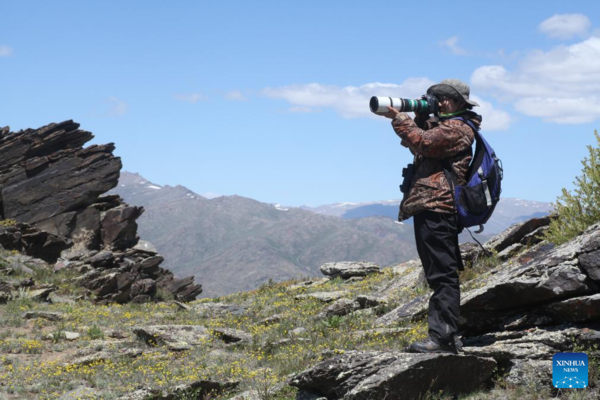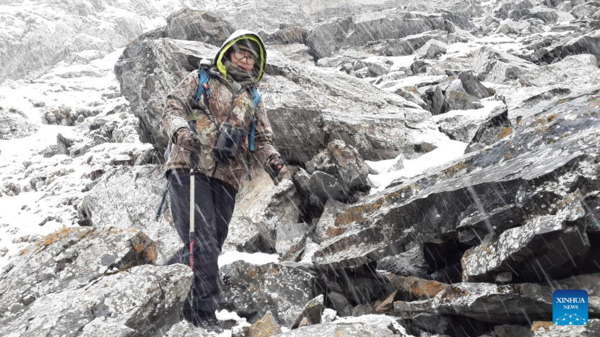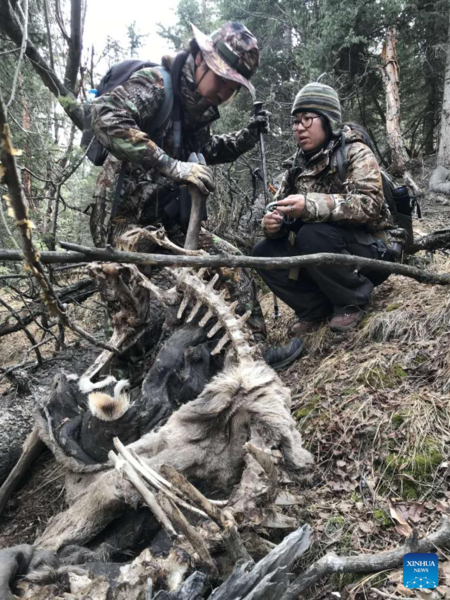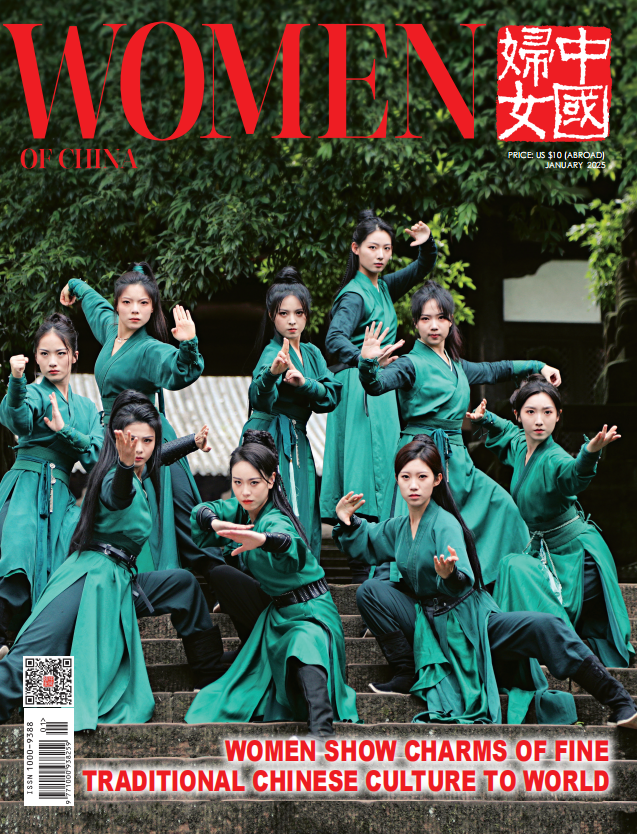Chasing Butterflies, Protecting Nature amid Xinjiang's Wilderness
 |
| Huang Yahui takes photos in the Tianshan Mountains in northwest China's Xinjiang Uygur Autonomous Region in 2024. [Xinhua] |
URUMQI, Jan. 15 (Xinhua) — Huang Yahui, 40, has been fascinated by nature since childhood, a passion she indulged in her twenties by engaging in adventurous outdoor activities.
Then in 2011, she chanced upon a life-changing opportunity to volunteer with a research team led by Ma Ming, a professor at the Xinjiang Institute of Ecology and Geography, Chinese Academy of Sciences.
Huang spent several months engaging in fieldwork alongside the team, immersing herself in bird observation and conservation efforts, and deepening her interest in environmental preservation.
That brief experience helped shape the future career of Huang, a native of northwest China's Xinjiang Uygur Autonomous Region.
"When the fragile golden eagle, raised under our care, spread its wings and soared into the sky, I felt a deep sense of responsibility to protect the ecological environment of my hometown and dedicate myself to preserving biodiversity," she recalled.
Huang is now a full-time wildlife conservationist and a co-founder of the nature conservation and science popularization center in Saybag District, in the regional capital Urumqi. The center is dedicated to heightening environmental awareness and conservation efforts.
From March to November each year, Huang and her colleagues live and work outdoors, equipped with camping gear, cameras, binoculars and notebooks. They trek through the forests, mountains and plateau areas across Xinjiang.
She has developed a strong passion for butterflies and, over the past decade, has actively worked to record their habitats and compile ecological conservation reports, documenting hundreds of butterfly species.
According to zoologists, butterflies are an indicator species for climate change. Butterflies have a relatively simple body structure and are highly sensitive to slight climate changes throughout their life cycle, which includes stages from egg to larva to imago, Huang explained.
"Therefore, changes in population structure, numbers, phenological period, habits and habitats of butterflies can reflect regional climate change," she said.
However, due to the high diversity and abundance of butterfly species, as well as the migratory patterns and regional variability among certain species, relying solely on scientific researchers for butterfly observation is insufficient. According to Ma, ecological conservation organizations play a vital role in establishing butterfly observation networks.
Over the years, Huang's team has actively contributed to this effort.
One summer day, while exploring the Tianshan Mountains in Xinjiang, Huang and her colleagues spotted a snow-white butterfly with wings adorned with shimmering spots, resembling the "eyes" found on peacock feathers.
"It's the Parnassius loxias. I found it," Huang exclaimed with excitement. This species was first documented by an ecologist over a century ago. "I took photographs and notes, feeling as though I were conversing with butterflies alongside biologists from more than 100 years ago," Huang said.
During the past more than 10 years, Huang and her colleagues have recorded more than 200 butterfly species and submitted their research findings to local forestry and grassland departments and research institutions, providing vital data for biodiversity conservation.
They have also worked to raise awareness of biodiversity conservation among primary and secondary school students across Xinjiang, helping guide them in understanding the importance of nature.
"We tell the students how animals like butterflies, squirrels and snow leopards forage and set up homes. They listen with great interest," she said. "I hope the children can realize that wildlife is our friend."
Additionally, as human activities, such as overgrazing, have fragmented some wildlife habitats, Huang's team has worked to raise awareness among herders, assisting them in restoring grazing land to grassland.
Since the herders from several ethnic minority groups have a tradition of crafting leather carvings and felt paintings, the team has launched targeted design initiatives to help them create more marketable handmade products, boosting their income.
Chi Lupeng, a member of Huang's team and a graduate of the China Academy of Art, has been helping herders design innovative leather artworks. "Our goal is to enhance the artisanship of the herders and strengthen online promotion so that more people can discover Xinjiang and its folk crafts, thereby expanding the market for products from pastoral areas," said Chi.
In 2023, Huang was named one of the 100 "most outstanding ecological environment protection volunteers" by authorities including the Ministry of Ecology and Environment.
Currently, Huang is working on a book about butterfly conservation that integrates the traditional culture of the 24 Chinese solar terms.
"I want to write about the habitats of 24 butterfly species and the corresponding ecological protection stories. My goal is to help more people understand the importance of harmony between humanity and nature, and encourage efforts in protecting nature and biodiversity," she said.
 |
| Huang Yahui is pictured during a scientific expedition in the Tianshan Mountains in northwest China's Xinjiang Uygur Autonomous Region in 2015. [Xinhua] |
 |
| Huang Yahui (R) and her teammate discover wildlife remains in the Tianshan Mountains in northwest China's Xinjiang Uygur Autonomous Region in 2018. [Xinhua] |
(Source: Xinhua)
Editor: Wang Shasha
Please understand that womenofchina.cn,a non-profit, information-communication website, cannot reach every writer before using articles and images. For copyright issues, please contact us by emailing: website@womenofchina.cn. The articles published and opinions expressed on this website represent the opinions of writers and are not necessarily shared by womenofchina.cn.






.jpg)

 WeChat
WeChat Weibo
Weibo 京公网安备 11010102004314号
京公网安备 11010102004314号